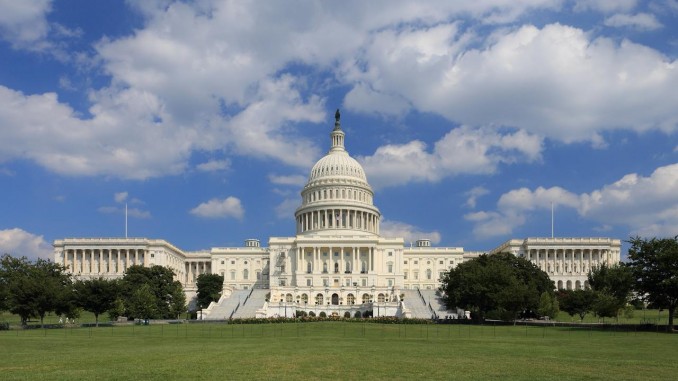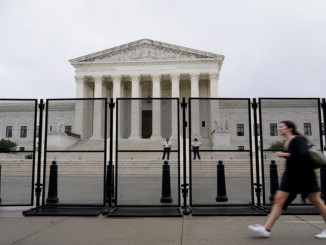
“The master’s tools will never dismantle the master’s house.” – Audre Lorde, poet and activist
The U.S. presidential election is over and the long process of campaigns and vote counting is fading away. Now, we see the disputed election and shameless lawsuits, launched by a defeated Trump and supported by the Republican Party. Meanwhile the elected Democratic Party politicians, Biden and Harris, promise to heal a divided country and represent movements for racial and economic justice – movements that they spent their political careers ignoring at best, and opposing at worst. Is this the best “democracy” we can imagine?
Who Represents Whom?
The 2020 elections cost a total of $14 billion. Running in elections requires massive amounts of money. This means that both the Democratic and Republican Parties are dependent on rich donors. To be a politician, you either have to have money or find a way to get it. This means power is exercised for the most part by a political elite of professional politicians like Biden and Harris, or people with enough wealth to buy their way into the process like Trump did and Michael Bloomberg tried to do. Today, the majority of the members of Congress have personal wealth of at least one million dollars. Who do we imagine these people represent, other than the class they come from – the super-rich!
An Undemocratic System
The United States constitution set up a political system that is far from the ideal of “one person, one vote.” The two houses of Congress, the presidency, and the Supreme Court are all structured to limit the decision-making and control of the 99 percent.
The Senate has two senators for each state. This means that states like Wyoming with a population of 578,759 have the same power in the Senate as California with a population of 39.5 million. A voter in Wyoming has 68 times the power of a voter in California in the Senate! In spite of the Democratic Party receiving 41,549,808 more votes than the Republican Party in this year’s senate races – one seventh of the U.S. population – the best that the Democrats can hope for is a 50-50 split in the Senate.
The House of Representatives gives representation to states in proportion to their populations, but this is done through a complicated formula. The House can only have 435 representatives, but every state gets at least one representative. These rules give proportionally more representation to the population of small states, and restrict representation of large states. For example, in 2016 the Republican Party won only 1.2 percent more votes than the Democratic Party, but received 21 more seats in the House than Democrats – five percent of the seats.
In presidential elections, the president is not chosen by popular vote, but by the Electoral College. Each state has a certain number of “electors” equal to the number of senators and representatives each state has in Congress. Together, they make up the Electoral College. Just like in the Senate, in the presidency, rural voters have more power than urban voters. The vote of someone in Wyoming is worth three times the vote of a Californian. A Black person’s vote is worth three-quarters of a white person’s vote and a Latin person’s vote is worth half as much as a white person’s vote – simply because Black and Latino voters are more likely to live in big cities and in more populous states.
Most states are usually ignored in presidential elections because the outcome of their elections is virtually guaranteed – for example, California is guaranteed to go to the Democrats and Alaska will vote for the Republicans. The two parties only really campaign in “battle-ground states” where the election is close. After the November 3rd election, the electors (from the Electoral College) from each state present their votes to Congress, and a president is chosen based on the party’s candidate with the most Electoral College votes. Because of the Electoral College, a president can get the majority of Electoral College votes but a minority of votes from the population. In three of the last eight elections, the Republican presidential candidate, with fewer popular votes than their opponent, won the presidency. For example, Hillary Clinton got two million more votes than Donald Trump in 2016, but Trump was elected president based on the results of the Electoral College.
The Supreme Court, along with the judges in lower courts, interprets and applies laws made by Congress. These officials are appointed by the president and approved by the Senate. They are not elected. Lower court judges have long term limits – for example, 12 years for an appeals court judge in California. Supreme court judges, or justices, are appointed for life.
The consequences of this set-up are playing out right now. The Senate, dominated by the Republican Party, spent the last two years of Obama’s presidential term blocking any court appointments, most famously Obama’s appointment of judge Merrick Garland to the Supreme Court. Once Trump was elected in 2016, the Senate opened the gates to Trump, allowing him to appoint hundreds of Federal judges. The retirement of justice Anthony Kennedy in 2017 and the deaths of justices Antonin Scalia and Ruth Bader Ginsberg opened two more Supreme Court seats for Trump and the Republicans. Trump was allowed to appoint Brett Kavanaugh, Neil Gorsuch, and Amy Coney Barrett – three far-right, conservative Supreme Court judges. As a result, the Supreme Court is now dominated by right-wing judges who oppose abortion, civil rights of many sorts, and workers’ rights. These justices were appointed by the President and confirmed by the Republican-controlled Senate, both elected by a minority of voters.
A Slave-Owner’s Republic
Why is the U.S. political system designed this way? The framers of the U.S. constitution knew what they were doing. The constitution was written by slave-owners. The constitution only gave the right to vote to white, property-owning men. But this wasn’t enough. The slave-owners in Southern states like Virginia, the Carolinas, and Georgia were a minority even among wealthy, white men. So they designed a system that guaranteed their right to rule by giving extra power to small-population states. They went so far as to count three-fifths of the slave population in their census, giving the slave-owners even more representation, even though the slaves had no political rights.
This situation did not last. The Northern states developed economically and by the 1850s, they were led by wealthy industrialist capitalists and their representatives like Abraham Lincoln, a railroad company lawyer. They won support by removing property restrictions in voting, giving anyone rich or poor the right to vote – as long as they were a white man. They formed the Republican Party to try to win control of the government away from the slave-owners. The political conflict between North and South led to the Civil War, which gave slaves the opportunity to free themselves and put an end to slavery once and for all.
The slave-owners were overthrown, but why didn’t the Republican Party change the political system? They must have found it useful! With the growth of the railroads and factories in the North came millions of workers, immigrants from all around the world. The workers, trying to better their conditions, would naturally turn to the ballot box and try to influence politicians to represent workers’ interests. A system that decreases the power of urban voters makes it easier for the wealthy elite to escape the pressure of workers’ votes. The wealthy elite can then play on the prejudices and fears of isolated rural communities to exert control through the system of unequal representation.
To Win the Battle For Democracy, We Must Change the State Itself
Since the Civil War, many battles have been fought to win greater democratic rights. Black men formally won the right to vote after the Civil War along with their freedom. But soon these rights were denied to Black people in the segregated South until the Civil Rights movement of the 1960s. Women of all races were denied the vote until 1920. In both cases, mass movements forced the system to change and allow people the right to vote.
In spite of major struggles and victories by social movements, the fundamental structure of the system remains. For the most part, only the wealthy or those with their support can afford to mount campaigns and get elected. In addition, from the Presidency to Congress and the Supreme Court, the system is designed to keep any democratic pressure from the majority of the population under limits.
Today, the inequality in voting power enables the Republican Party, with its rural base, to exert greater control than it has popular support by playing on the fears and prejudices of rural white voters. It is no accident that one of the central themes of Trump’s campaign was to condemn “Democrat-run cities,” and to align himself with racism and prejudice. The fear-mongering and scapegoating of Trump’s message is only a slightly more vulgar version of the politics the Republicans have relied on for decades.
The Democratic Party on the other hand relies on the popular vote to a greater extent than the Republican Party, and therefore has to take into account some of people’s needs, especially the needs of minority voters whose votes the Democrats have come to rely on. However, this has not changed the nature of the Democratic Party as a party representing the wealthy elite. Democrats have launched or supported wars, including the wars in Afghanistan and Iraq, stripped away benefits to the poor, cut spending on education, changed laws resulting in putting more people in prison, and handed over billions of tax dollars to corporations. Civil rights for Black people, LGBTQ people, and workers’ rights to unions and legal protections on the job were not given easily by politicians, they were all won by struggles that forced politicians to act. Democrats in office have made few to no real changes without the force of popular movements pushing them. The Republican dominance of the Senate is often the Democrats’ excuse for why they failed to make these changes. In this way, the two parties work together to facilitate the rule of the rich, while keeping the rest of us distracted.




